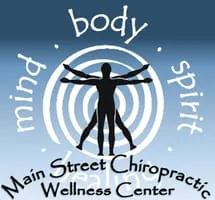Morton’s Foot Syndrome aka Greek Foot
Lot’s of people think they have a weird foot because it looks like the second toe is longer than the big toe. It is actually quite common, so common in fact, that the Statue of Liberty’s feet are modeled after the Greek foot, another name describing the Morton’s toe.
The correct term for Morton’s Toe is Morton’s Foot Syndrome, named after Dr. Dudley Morton who was a foot doctor of some fame back in the 1930’s. He authored several books on the subject including a book named “Oh Doctor! My Feet!”, where he talks about some of the problems associated with this foot size.
Recognizing Morton’s Toes?
Morton’s Toe is a little misleading, because this condition isn’t really a long toe, meaning the phalanges (toe bones). It is the relative length of the Metatarsal foot bones, specifically the relative length difference between the first and second that defines this foot shape. Morton’s Toe aka Morton’s Foot Syndrome is a short first metatarsal relative to the second metatarsal.
The X-ray from Dr. Morton’s book shows the first metatarsal being shorter than the second metatarsal. Dr. Morton also observed a thicker second metatarsal shaft and hypermobility of the first metatarsal.
You don’t need an x-ray to determine if you have a Morton’s Toe.
If the space between your first and second toe appears to be deeper, not wider, but deeper than the space between your second and third toes, you have a Morton’s Toe which is also sometimes just called a Morton’s Foot.
Does Morton’s Toe cause problems?
This foot structure is known to cause and perpetuate musculoskeletal problems. Problems start with the feet and the list is long. It impacts the whole body because it changes your posture and the way you walk and run.
| Foot Pain Metatarsalgia (ball-of-foot pain) Morton’s Neuroma Metatarsal Stress Fractures Plantar Fasciitis Calluses Bunion Hammer, Claw & Mallet Toes | Lower Extremity Pain Ankle Pain—Weak Ankles Shin Splints Tight, Sore & Tired Calf Muscles Knee Pain Tight IT Bands Runner’s Knee (Chondromalacia) Fractured Meniscus ACL Tears Sciatica Pain Arthritis | Back and Neck Scoliosis & Kyphosis SI Joint Pain Sciatica (Piriformis Syndrome) Low-Back Pain Upper Back & Shoulder Pain Neck Pain (Forward Head Posture) |
How can Morton’s Toe influence the whole body?
Dr. Dudley Morton observed that people who had Morton’s Toe experienced profound changes in their gait. He noticed many people rotated their feet outward. He observed postural changes. His solution to the problem was to make what he later patented, called a Morton’s extension. It was a rigid plate placed under the inside of the foot that extended beyond the length of the first metatarsal to approximately the same length as the second metatarsal. In addition, Dr. Morton thought the first metatarsal was hypermobile, but what he missed was that the first metatarsal was also elevated, so that when a person tried to walk with their legs and feet in proper alignment, the first metatarsals and the big toes were not properly weight bearing.
As has later been established, the Elevated First Metatarsal affects many more people than does Morton’s Toe. About 80% of the population has an elevated first metatarsal. Although accurate statistics are hard to find it is estimated that 20-30% of the population has a Morton’s Toe.
Is there a cure for Morton’s Toe?
Some doctors might propose surgery to make the first and second metatarsal more equal in length. What Dr. Morton considered a hypermobile first metatarsal often manifested in a splayed first metatarsal that pointed away from the foot. Changing the metatarsal length would not affect its orientation, and problems like bunions would still likely be a result.
As it turns out, the correction for an elevated first metatarsal also greatly improves the mechanics of the Morton’s Toe foot. This correction consists of a small pad placed underneath the head of the first metatarsal– thickness up to 1/4 inch. This approach was suggested by Dr. Morton himself as well as Dr. Janet Travell who wrote the recognized text books on myofascial pain. She considered correcting the Morton’s Foot problem essential to treating muscle pain.
Morton’s Toe & Ageing
This is probably the most overlooked part this syndrome. Young people, because they are stronger and more active, may have fewer symptoms from Morton’s Toe, but faulty body mechanics is tough on both joints and ligaments. Knee osteoarthritis can be traced directly to torque in the knee caused by Morton’s Toe and internal rotation of the tibia, and so can Meniscus tears and tens of thousands of arthroscopic knee surgeries.
For someone with this foot structure, athletic activities can accelerate and aggravate wear and tear on joints and ligaments causing you to give up your favorite sports prematurely. Correcting the Morton’s Toe leads to better body alignment and stronger athletic performance.


